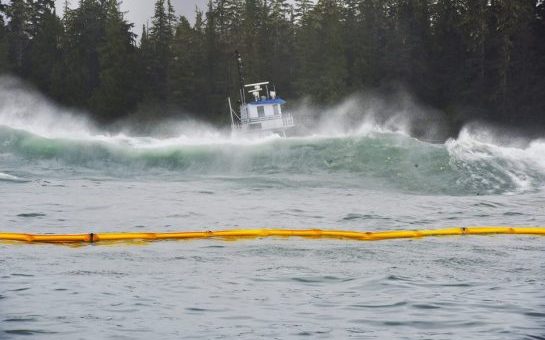More work needed in spill response
In response to the federal government’s announced Ocean Protection Plan, Premier Christy Clark said she was gratified to say it addressed the gaps the province had identified in our current ability to respond to marine spills. While I agree the plan includes some positive additions that will help preserve and protect our coastline, a dangerous and cavernous gap remains – we still have no capacity to clean up an oil spill.
Given that this initiative may be used by both federal and provincial governments to justify their support of the Trans Mountain proposal – a project that would increase heavy oil tanker traffic in southwestern B.C. by 580 per cent – it is important that you have the straight facts about how our coast would fare in the event of a major oil spill.
During the National Energy Board’s hearing on the Trans Mountain Kinder Morgan Expansion Project, I sought intervenor status both as an MLA and as a scientist. Over nearly two years I reviewed the project in a scientific capacity. I examined the proponent’s understanding of how diluted bitumen (dilbit) – the type of heavy oil that would be transported on Trans Mountain tankers – would interact with the marine environment, and I raised concerns shared by people across B.C.
Oil spill response in B.C. is managed by the Western Canada Marine Response Corporation.
WCMRC is required under the Canada Shipping Act, 2001 to maintain sufficient capacity to respond to a 10,000-tonne spill. This may seem like a lot, but the Exxon Valdez oil spill of 1989 was 40,000 tonnes and a single Kinder Morgan tanker would be carrying over 100,000 tonnes of oil. That means WCMRC would only have the capacity to respond to roughly 10 per cent of a tanker’s cargo.
Not only that, but the fact that the WCMRC is able to respond to a 10,000-tonne spill does not actually mean it is able to recover the full 10,000 tonnes.
In fact, according to the Federal Tanker Safety Expert Panel, “Evidence suggests that mechanical recovery rates, in optimal conditions, are usually only between five per cent and 15 per cent of the oil spilled.” Despite existing equipment, it’s often hard to contain and recover spilled oil.
To make matters worse, federal government studies show that dilbit sinks in the presence of suspended particles – and the WCMRC has no capacity to recover submerged or sunken oils.
Given the prevalence of suspended particulate matter along the tanker sailing route, a dilbit spill on the B.C. coast would have profound and long-lasting consequences.
Our governments talk a lot about having “world class” spill response capabilities, indeed that seemed to be the theme of the Ocean Protection Plan announcement. If you were suspicious of that claim, you had every right to be so.
Even our friends to the south who share our western coastline are worlds ahead of us. In the U.S., for a ship to be registered to transport oil it needs to be covered by a spill response organization that has the capacity to clean up a “Worst Case Discharge,” defined as the loss of the ship’s entire cargo complicated by bad weather. Washington State also has capacity to deal with sunken and submerged oils.
If Washington State can set these standards, then why should we accept anything less?
We shouldn’t. We are lucky enough to have one of the most pristine coastlines in the world and our governments have an obligation to protect it. Part of that obligation includes providing British Columbians with the honest facts so we can make an informed decision of what happens to our coast.
Comments are closed.




